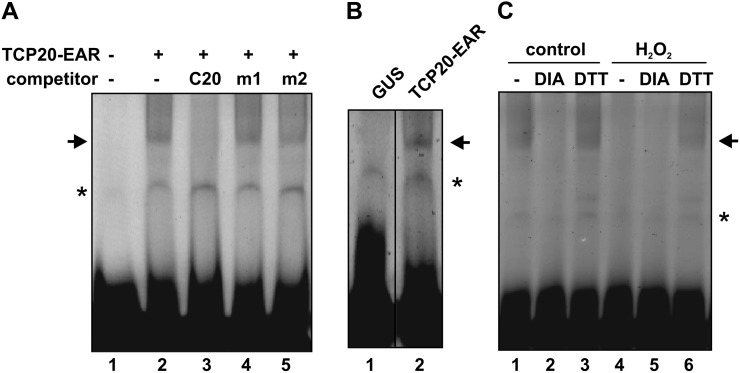Figure 8.
In vivo redox sensitivity of class I TCP transcription factors. Arabidopsis plants were transformed with a construct that expresses TCP20-EAR under the control of the 35S CaMV promoter. Thirty-six hours after transformation, total protein extracts were prepared and their DNA-binding activities were analyzed by EMSA using a labeled oligonucleotide with the TCP20 target sequence GTGGGACCGG (Viola et al., 2011). A, The DNA-binding specificity of proteins present in extracts from plants transformed with 35S::TCP20-EAR was tested by competition with a 100-fold molar excess of unlabeled oligonucleotides containing the TCP20 target site (C20), the same site with mutations at positions 3 and 8 (m1, GTAGGACTGG), or an oligonucleotide with an unrelated target site (m2, CAATAATTGA). B, EMSA using extracts from plants transformed with 35S::TCP20-EAR or with pBI121, which expresses GUS from the 35S CaMV promoter, as a control. C, EMSA using extracts from plants transformed with 35S::TCP20-EAR treated with either water (control) or 10 mm H2O2 during 1 h immediately before extract preparation. Extracts were treated with 10 mm diamide (DIA), 50 mm DTT, or water (–) during 1 h before EMSA analysis. Arrows indicate the positions of a retarded band observed exclusively in extracts from plants transformed with the TCP20-expressing construct, while asterisks indicate an unspecific retarded band. The experiment was repeated twice with similar results.

